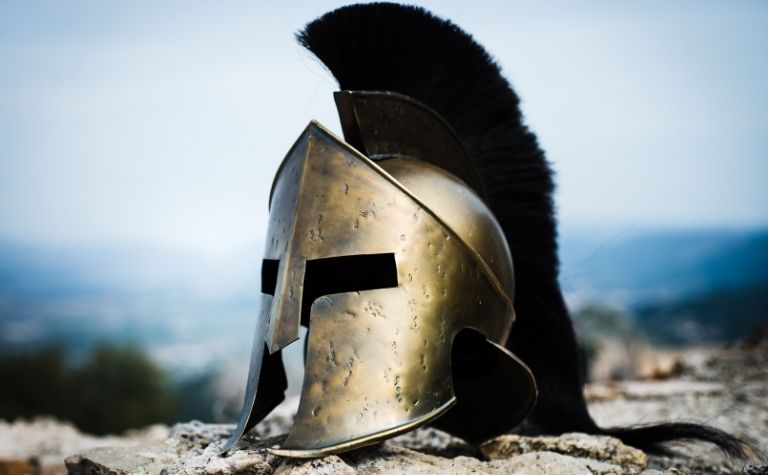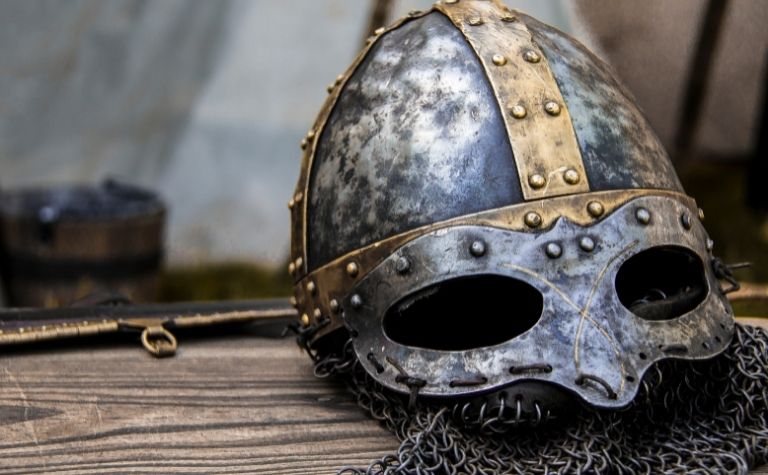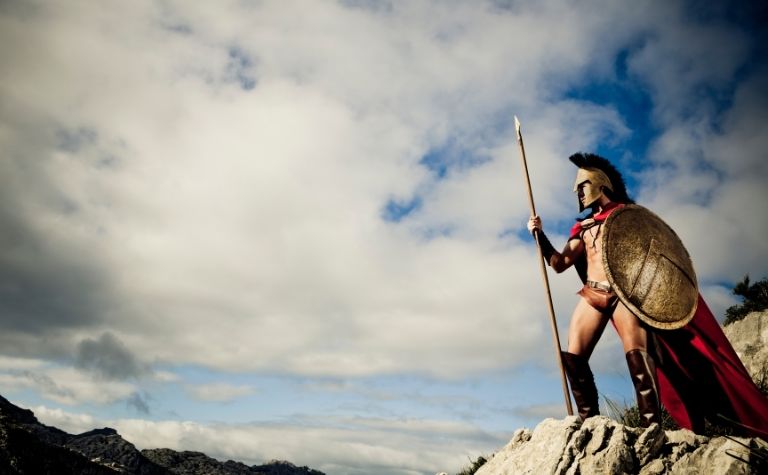It’s a fascinating intellectual exercise to imagine a head-to-head battle between the Vikings and the Spartans, two of the fiercest and most decorated warrior races in history.
Their weapons, armor, and war tactics offer ample opportunities to speculate on the outcome of this fictitious battle.
Most people agree that Spartans would win any battle with the Vikings.
Spartans would be victorious because of their superior war tactics and childhood training.
The Spartans fought in the Phalanx formation, considered one of the most effective war tactics in history.
It’s a challenging task to ascertain the battleground superiority of two warrior classes. A mere comparison between the weapons and the armor they used isn’t sufficient.
Besides describing and comparing their weapons and defensive gear, this article also compares the battlefield strategies employed by the Vikings and the Spartans.
Also see What Country Has the Most Viking Heritage? to learn more.

Viking and Spartan Weapons Comparison
The principal Spartan weapons were:
- Xiphos: This was a short sword with two sharp edges. It was a close-range weapon.
- Kopis: This was a curved sword with a single edge, heavier than the xiphos. The Spartans used it to attack opponents during hand-to-hand combats.
- Dory: This was a spear measuring six to nine feet (1.83-2.74 m) in length. It was a mid-range weapon.
- Javelin: This was a wooden pole fitted with a sharp metal tip. The javelin was a long-range weapon.
The Vikings and the Spartans seem evenly matched when it comes to the versatility of their weapons.
The Vikings, too, used many weapons, including:
- Swords
- Axes
- Lances
- Spears
- Bows and arrows [1]
Their swords were usually double-edged and measured about 90 cm (35.43 in).
However, all fighters couldn’t afford to use expensive swords.
The axes and lances were cheaper, widely made, and thus were used by many warriors.
The Vikings’ axes were made of iron.
They were large but relatively thin and thus, lightweight and easy to carry and wield. The shaft measured over a meter (3.28 feet).
Both the Spartans and the Vikings possessed in their arsenal close, mid, and long-range weapons.
Also see What Kind of Armor Did the Vikings Have? to learn more.

Viking and Spartan Armor Comparison
The Spartans had a vast and impressive armor range. The main pieces were the following:
- Shield (hoplon or aspis): The shield was large, round, and heavy. It had three layers, with the center made of bulky wood, the outside layer was bronze, and the middle layer was leather.
- Helmet: The Spartan warriors wore a Corinthian-style helmet. It was made of bronze and covered the head and the face completely, leaving only two slits for the eyes. The helmets were fitted on the top with a vividly-hued horsehair crest to cushion the hits from weapons.
- Cuirass: This was a bronze chest plate that protected the torso from both frontal and rear attacks.
- Greaves (knemides): This bronze armor protected the shins, knees, and ankles.
- Pteruges (cingulum): This piece of armor protected the groin region. It consisted of two layers of hardened leather flaps that didn’t hinder free movement.
- Bracers: These guards were made of leather and protected the forearm and the wrist.
In comparison, the Viking warriors used very few pieces of protective battle gear. Even then, most fighters couldn’t afford several pieces of armor.
The following are the critical pieces of Viking armor:
- Shield: Most Viking fighters carried large shields. These shields were made of sturdy wooden boards riveted together.
- Helmet: The Viking helmet was an iron bowl fitted with a nose piece and sometimes, a piece of mail sheet at the back to protect the neck. Some Vikings wore leather helmets with a similar design.
- Chainmail: Chainmail armor consisted of a shirt made of a network of intertwined iron rings. Iron was difficult to excavate, so chainmail shirts were expensive. Only the wealthy warriors could afford it. Other Viking fighters wore thick and padded leather clothing to absorb hits from sharp weapons.
Also see Is the Minnesota Vikings Helmet Supposed to Be Thor? to learn more.

Viking and Spartan Tactics Comparison
Ancient Sparta was built around a warrior culture. Male Spartans had only one occupation: soldier.
They excelled at warfare and were the masters of the ancient Greek way of fighting in a Phalanx formation.
In the Phalanx, the fighters stood shoulder-to-shoulder to form a tight and deep cluster and advanced towards the enemy.
The flank consisted of archers and slingers who deflected the enemy with their shots and protected the central unit. Every soldier carried a spear.
The rows on the front carried the spear horizontally, while those at the rear carried the weapon vertically.
The Phalanx could sometimes be eight rows deep. However, the depth depended on the nature of the terrain and the composition of the enemy army and their battle tactics.
The Phalanx formation made battles fast, gory, and decisive.
Early written records suggest that the Vikings adopted the following war tactics:
- Surprise attacks using advanced ship technology: The Viking ships were fast and had narrow and deep keels. The Vikings possessed legendary seafaring skills and used these ships to travel deep into enemy territory and launch surprise attacks.
- Long-range attacks using longbows: The Vikings deployed long-range attacks using longbows. Historians believe that these longbows had a range of a couple of hundred meters. These weapons let them penetrate and deplete enemy ranks from a safe distance.
- Mid-range attacks using spears: The Vikings followed their long-range attacks with mid-range attacks and hurled spears at the enemy.
- Close combat using lances, axes, and swords: During close combat, the Vikings used lances, swords, and axes to strike blows and slash at the enemy. They protected themselves with shields.
According to historians and warfare experts, the Spartans were one of the world’s most organized and successful armies.
The Phalanx formation was one of the primary reasons for their battlefield success.
The other reason would be the intense military drilling every Spartan man underwent since he was a child.
If the Spartans and the Vikings were to face off in a hypothetical battle, the Spartans would have an edge.
Conclusion
Whatever the beliefs of the historians, posterity honors both the Spartans and the Vikings as legendary warrior classes that have influenced warfare down the ages.
Also see Were the Vikings Literate? to learn more.
References:
[1] Source
